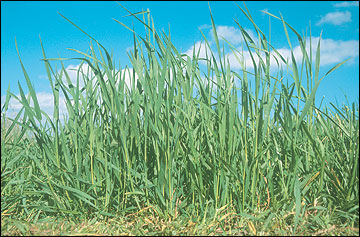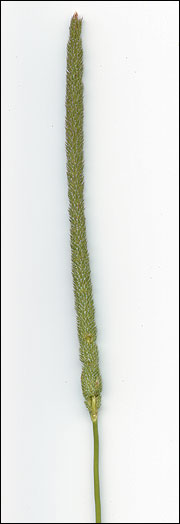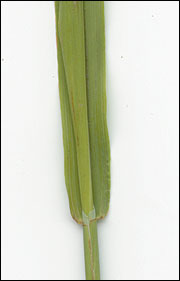Timothy (Phleum pratense L.)
Cool-season grasses
Timothy is a relatively late-maturing, short-lived perennial grass that is best adapted to cool, moist regions. Timothy has a fibrous and relatively shallow root system. Because it does not develop a deep root system, it does not persist well under drought conditions. It is intolerant of hot weather but is among the most winter hardy of the cool-season grasses. Timothy’s forage quality is often better than many other cool-season grasses in the spring because it matures three to four weeks later than orchardgrass or tall fescue. Timothy is relatively easy and inexpensive to establish, but it does not compete well with other grasses. It is considered one of the more friendly grasses for wildlife habitat. Cattle like timothy, but the plants cannot survive close or frequent grazing. If you use timothy, you should practice rotational grazing.
 Timothy
Timothy
 Yield distribution of timothy in Missouri.
Yield distribution of timothy in Missouri.
- Origin: Northern Europe
- Adaptation to Missouri: Best adapted to the northern half of the state.
- Growth habit: Perennial bunchgrass.
- Blade: Rolled in bud shoot, flat, often twisted, bluish color, tapers to tip, smooth, glabrous, ridges on upper surface lower side is dull and smooth, margins scabrous.
- Sheath: Closed, smooth, rounded, often swollen below ground.
- Ligule: Membranous, white, toothed, often with a distinct notch, up to 1/5 inch long.
- Auricles: Absent.
- Seed head: Spikelike, dense, compact, cylinder shaped.
- Fertilization: 40 to 60 lb N/acre in late February or early March. Phosphorus and potassium as needed.
- Timing of production: 75 percent of growth before June 15.
- When to begin grazing: When grass is 6 to 8 inches tall.
- When to cut for hay: Just prior to heading.
- Lowest cutting or grazing height: 3 to 4 inches
- Fall management: Light grazing possible in September and October. Leave a 6-inch stubble for winter.

